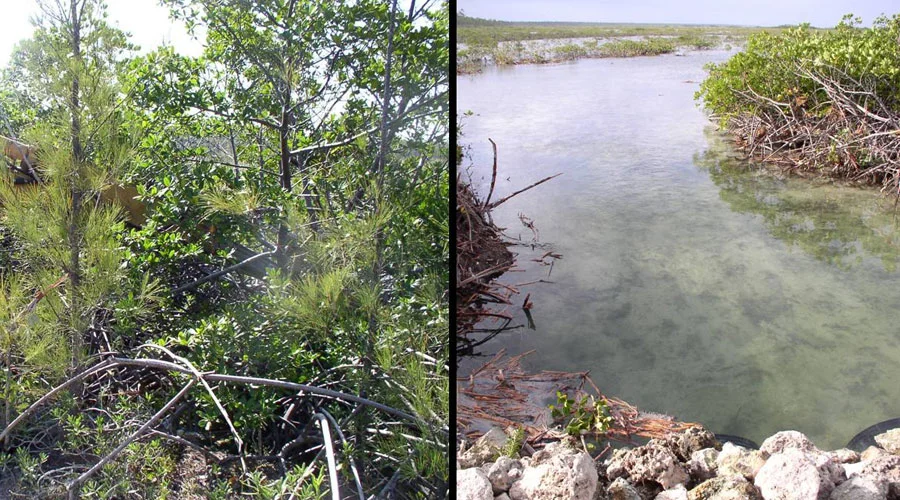With dozens of fragmented wetland ecosystems in the Bahamas (typically due to roads built without bridges or culverts), there are numerous opportunities to manipulate the degree of connectivity through restoration. This provides for habitat reclamation, as well as an excellent opportunity for hypothesis-driven research. Over the last decade, I have worked to develop a diverse team of collaborating partners (Friends of the Environment, Bahamas National Trust, The Nature Conservancy), and our shared vision is to conduct a series of creek restoration projects throughout The Bahamas and to use them as a tool for integration of scientific research and education (see here and here). This framework provides for unprecedented opportunities to develop rigorous graduate research projects testing basic tenets of ecological theory, including questions focused on food web dynamics, the trajectory of change in ecosystem function following restoration, community assembly, and the value of estuaries as nursery habitats.
The pictures on this page are from the Cross Harbour creek restoration completed in April 2006. This project restored tidal flow to >130 hectares of mangrove wetland, providing new habitat for juvenile fishes and significantly increasing the nursery function of the system. This project was linked to a community outreach program entitled “Adopt a Fish, Adopt a School” in which donors purchase telemetry tags and donate them to local schools. Students then had their “own” fish they could track, and ultimately see if it moves from the restored wetland to the marine environment.
Original Article: Tidal Creek Restoration

